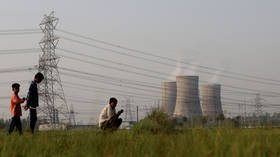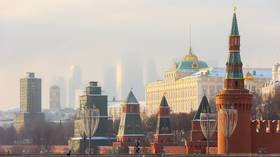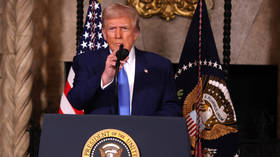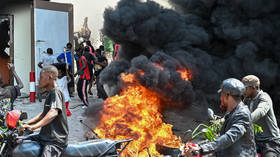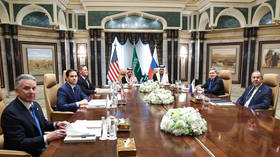Biden’s blunder could send oil prices to $100
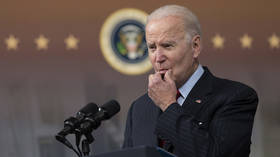
While oil prices crashed on Friday due to Covid concerns, there is still a very real possibility of $100 oil due to President Biden's strategic petroleum reserve (SPR) release.
When President Biden announced last week that the federal government would be releasing 50 million barrels of crude from the strategic petroleum reserve, perhaps those around him expected prices to go down significantly and stay down. Instead, prices rose, and OPEC+ gave a heavy hint it might cut supply. By Friday, oil prices fell sharply, but that was due to a new wave of Covid-19 fears and has little if anything to do with Biden's announcement that oil would be unleashed from emergency stockpiles.
But what comes next could send oil to $100.
Energy analysts warned that a release of SPR may not have the desired effect. They explained that however many barrels the US or its partners in Asia and the UK release, OPEC could withhold more and for longer. They explained that the SPR crude is sour, and refiners don't like it because it needs additional processing to reduce the sulfur content—a process that requires natural gas, which is also expensive currently. These explanations fell on deaf but determined ears. Now, analysts are warning about $100 Brent.
“It's not going to work simply because the strategic petroleum reserve — any country's strategic petroleum reserve is not there to try to manipulate price,” said Stephen Schork, editor of the Schork Report, speaking to CNBC earlier this week. “There's a considerable amount of bets out there that we will see $100 a barrel oil,” he added.
John Kilduff of Again Capital put it even more bluntly: “The battle lines are being drawn,” he told Bloomberg this week. “Certainly, OPEC and the Saudis can win this in that they are holding all the cards. They can keep more oil off the market than a SPR release can put on the market. If you see WTI get under $70, then I would expect a response from OPEC+.”
Read more on Oilprice.com: Oil nations are selling billions in green bonds
What's more, the planned release of these 50 million barrels will not happen overnight. It won't happen over a week, either. In fact, the plan is, per an Argus report, to offer long-term loans of up to 32 million barrels of crude from the SPR—sour crude, at that—and to sell another 18 million barrels over several months. For starters, there is no guarantee about the degree of uptake of the oil loans. For seconds, 18 million barrels over a few months amounts to less than 1 million barrels per day on average.
Meanwhile, OPEC is preparing for a worst-case scenario that involves the release of a total of 66 million barrels in January and February. The cartel itself seems to be aware that the chances of that sort of oil flood happening are next to non-existent, given the US plans, but the important thing is that it is preparing. And, according to OPEC sources who spoke to Argus, while most in the extended OPEC+ group feel they don't need to tweak the original agreement of adding 400,000 bpd to daily output, there is a stipulation that allows for a three-month pause in these additions.
OPEC alone accounts for 40% of global crude oil production. The US—the world's largest single producer—accounts for about 18.6%. And then there's Russia, with about 12% of global oil supply, which is a partner of OPEC. So, together, OPEC and Russia, without even counting the Central Asian producers, account for half the world's oil production. They are, indeed, holding all the cards.
Oil prices, CNBC notes in a recent report, have added about 50% since the start of the year as demand rebounded much more quickly and strongly than anyone seems to have expected, while supply remained tight as the industry treaded the new pandemic landscape cautiously.
Last week, prices fell dramatically on the news that a new variant of the coronavirus was identified in South Africa, but it is unlikely that this news will have a lasting effect.
Meanwhile, true to itself, the International Energy Agency has berated OPEC for what its head, Fatih Birol, has called “artificial tightness”.
“[A] factor I would like to underline that caused these high prices is the position some of the major oil and gas suppliers, and some of the countries did not take, in our view, a helpful position in this context,” Birol said this week, as quoted by CNBC.
“In fact, some of the key strains in today's markets may be considered as artificial tightness ... because in oil markets today we see close to 6 million barrels per day of spare production capacity lies with the key producers, OPEC+ countries,” Birol added.
The IEA was set up as a monitor of oil markets with the purpose of avoiding a repeat of the severe shortage that hit the West after much of the Middle East imposed an oil embargo on Israeli allies there. Since then, however, especially in recent years, the agency has focused increasingly on the green energy transition, earlier this year calling for the suspension of all new oil investment, only to urge producers a few months later to invest more in new production.
OPEC+ has so far resisted all calls for more oil production. The cartel has clearly signaled that it will do what it decides and will not defend anyone else's interests. Right now, OPEC+ is interested in higher oil prices. The group seems worried about more flare-ups of Covid and has cited this risk as a demand constraint that justifies their moderate production boost. Now, on top of that worry, they have those 50 million US barrels of crude coming in. The next OPEC+ meeting might bring a nasty surprise to large oil consumers, and this nasty surprise could push prices higher.
For more stories on economy & finance visit RT's business section




